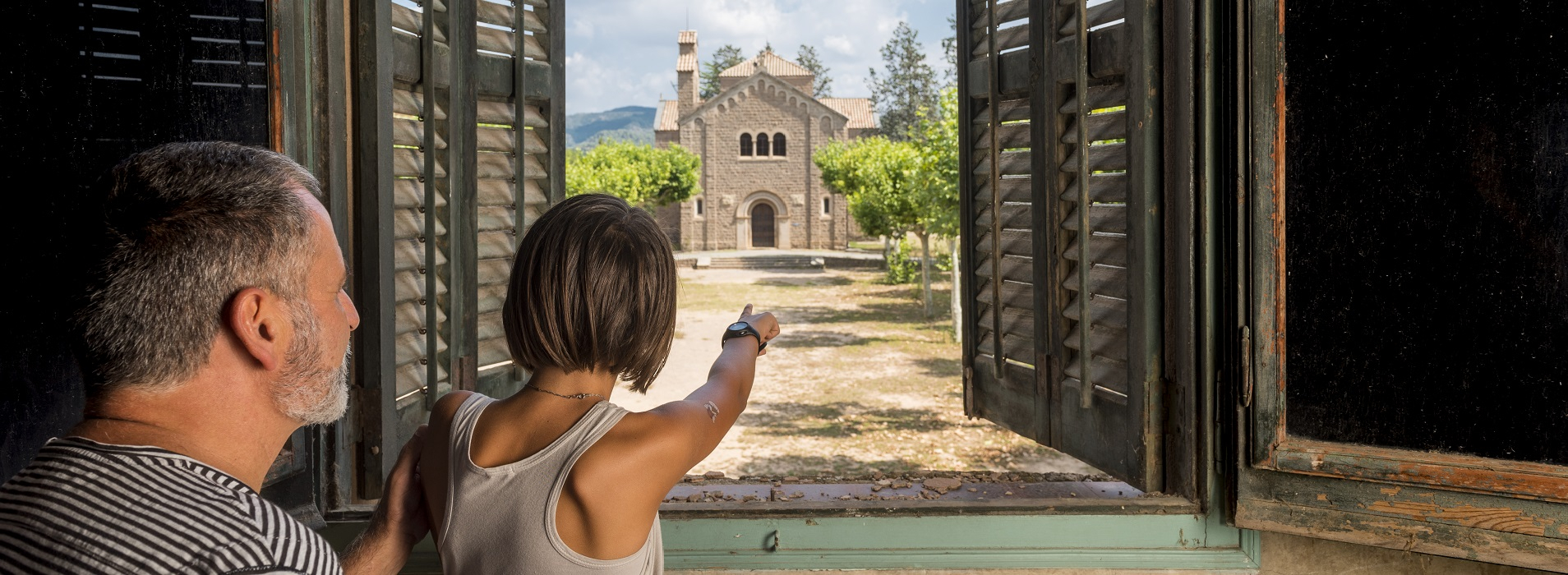

Cal Vidal
The colony of Cal Vidal (Puig-Reig) is located, following the river Llobregat and among the colonies of Cal Riera and Cal Marcal. In this colony we find the Museum of the Colonia Vidal.
Cal Vidal was the last of the Berguedà textile colonies to be built, during the second half of the nineteenth century. Ignasi Vidal and Ballet purchased during the eighteenth century, in 1892, the land where he later built the colony. Ignasi Vidal chose this place because it was one of the only available spaces between Navas and Cal Rosal, to install a colony. The rest of Lower Berguedà, beside the river, was already full of colonies.
The factory will be launched in 1900 but previously had to be built (from 1894) a dam of 17 meters high (the highest in the area) and a bypass channel that would allow make the Llobregat water as a source of energy. The channel did get the water to the turbine and transforms this force water into mechanical energy which is distributed throughout the plant through the tree system. Later, in the late twenties of the twentieth century, this system was modernized by installing an alternator close to the two new turbines Francis model. Thus, the energy that was moving the factory ceased to be mechanics to become electricity.
Once the plant starts up also began to build the first houses and the first street of the colony, the street of St. Ignatius, still existing. Cal Vidal presents the uniqueness that households are big than most large colonies; had about 75 M2-, services and facilities of the colony are quite far from the plant and the river. The part of the colony where workers passed the (few) spare time they had is very well defined and separated from the part where the workers had to make the workday. This separation was positive for the "quality" of life of workers. With the floors away from the industrial area were saved from had heard constantly the noise of the looms and had to suffer the coldness and humidity of the nearby river. In addition, there were no walls in Cal Vidal, unlike other colonies.
Step by step, the various heirs and owners of Cal Vidal went endowing the colony with more and better services: bakery, fishmonger, butcher, store, coffee, laundry communal showers, communal gardens, bank office, School, etc. The set of services and facilities for use by employees of Cal Vidal stand, especially the Women’s house, a large building constructed in the early 30s. Was a convent which housed also the nursery, the school for girls and a residence for single girls;
The theater opened in 1947 and was built as a small replica of the Gran Teatre del Liceu; the library, also from 1947 and the new church, neo-Romanesque style, built in 1942. (The old was next to the factory and was burned during the Civil War.
As the colony gradually took consolidation and gaining population went -1910, 300; 1934, 600; 1960, 700 inhabitants, also a thriving social and cultural choir, caramelles, festival, football team, theater performances, cinema, etc. All in all, those who lived and could making comparison with other colonies have said that in general Cal Vidal colony was where people lived better, or less bad depends on how you want to see.
Cal Vidal was the Berguedà colony which had a shorter life. It was later in the show and the first to close. In 1980 the factory stopped producing. Since then -and since before-, the colony has lost much population. Currently, only fifty people living there; most are elderly people who had worked all his life in the factory.
- Town: Puig-reig
- Post code: 08692
OFICINA DE TURISME DEL BERGUEDÀ
Carretera C16 Km 96
08600-Berga. Phone (+34) 654 125 696
Monday to Friday: 9 to 14h.
Saturday: 10 to 14 & 16 to 18h.
Sunday and holidays: 10 to 14h.
E-mail: turisme@elbergueda.cat
[Premsa]
Other

 English
English Follow us
Follow us







![[Tancar]](/plantilles/bergueda/img/tancar.png)

















